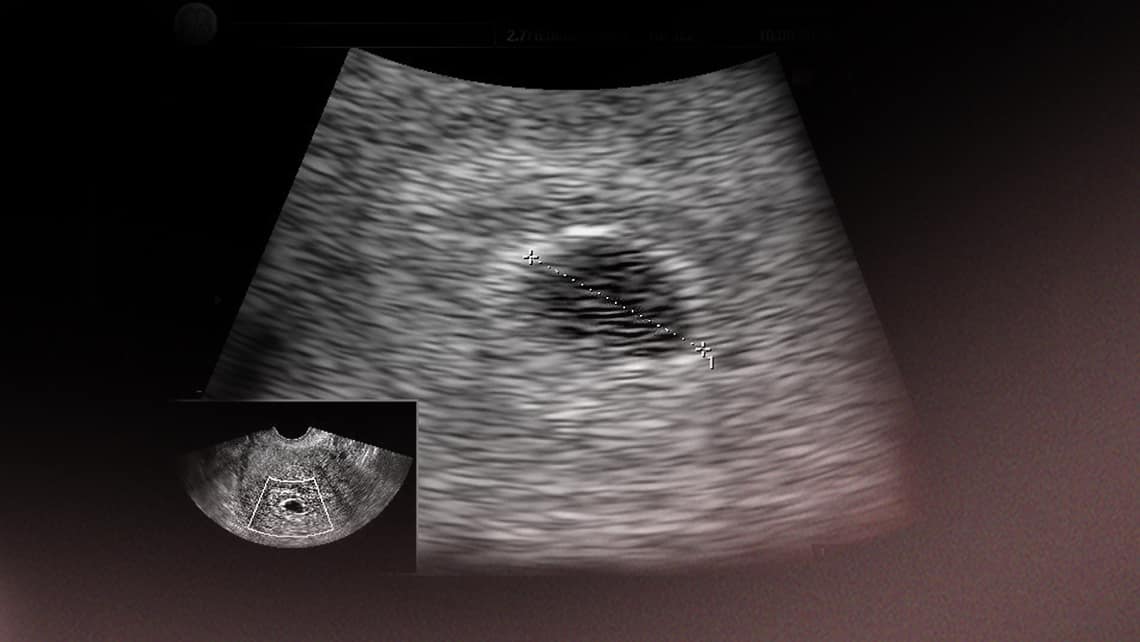
Anembryonic gestation
The anembryonic pregnancy or “blighted ovum” is a specific type of miscarriage in which the fertilized egg implants in the uterus but the embryo does not develop.
It is a relatively common problem: 10-15% of clinically detected pregnancies are lost spontaneously and one third of them are blighted ovum.
Índice
What causes anembryonic pregnancy
After fertilization, that is, after the union of sperm and egg, begin a series of cell divisions that lead to the formation of the gestational sac surrounded by a “shell” or cover called trophoblast (which is the one that will lead to future placenta). Inside the gestational sac the embryo will develop. In the case of anembryonic pregnancy the gestational sac is formed with the trophoblastic cover. But the embryo is not displayed because it has stopped developing at a very early stage, before reaching a millimeter in size, so it cannot be detected with an ultrasound.
In most cases, this type of miscarriage is the result of genetic or chromosomal abnormalities, that occur at the time of fertilization and that prevent a normal development of the embryo.
Symptoms and detection of anembryonic pregnancy
At the beginning of gestation, symptoms of pregnancy may be present: Missed period, positive pregnancy test, increased breast tenderness, nausea, etc.
By performing an ultrasound early in pregnancy we can detect this anembryonic gestation, even before the vaginal bleeding occurs. By a transvaginal ultrasound we can detect the embryo as early as 6 weeks of pregnancy. The diagnosis of anembryonic gestation is established by the discovery of a gestational sac. Surrounded by a trophoblast of more than two inches, where an embryo cannot be visualized inside. If in doubt about the date of the last period is preferable to repeat the ultrasound scan at 7-10 days, before rushing to establish the diagnosis of blighted ovum. If after this time we still not visualize the embryo, we have a diagnosis.
Termination of the anembryonic pregnancy
Like any type of miscarriage, evolution of these pregnancies end with his expulsion. Women may notice pregnancy symptoms diminish or disappear and then vaginal bleeding increasing in intensity occurs. When accompanied by pelvic pain, indicates expulsion is imminent. Once the diagnosis is established, we need to proceed to a uterus evacuation by performing medical treatment or curettage.
Pregnancy after anembryonic pregnancy
If presented with a normal evolution, a miscarriage of this kind has no future reproductive implications. After making the appropriate treatment, if desired and after waiting 2-3 menstrual cycles, women can try to get pregnant again.
If two or more consecutive miscarriages are happening, it is advisable to conduct a study to diagnose what the problem is from preventing the normal course of pregnancy.
Dra. Ana Palacios, Gynecologist at Instituto Bernabeu
IT MAY ALSO BE OF INTEREST TO YOU:
- Implantation failure and recurrent miscarriage Unit in Instituto Bernabeu
- What is a Chemical Pregnancy?
- Ectopic pregnancy
- Molar pregnancy or hydatidiform mole
- Pregnancy check-ups and labour

